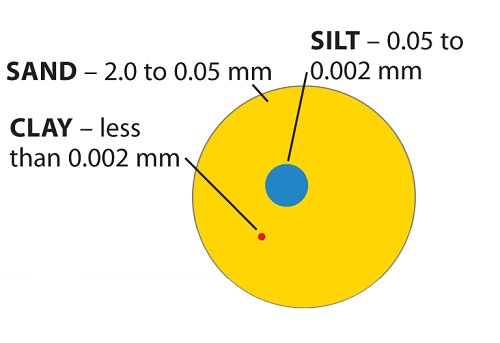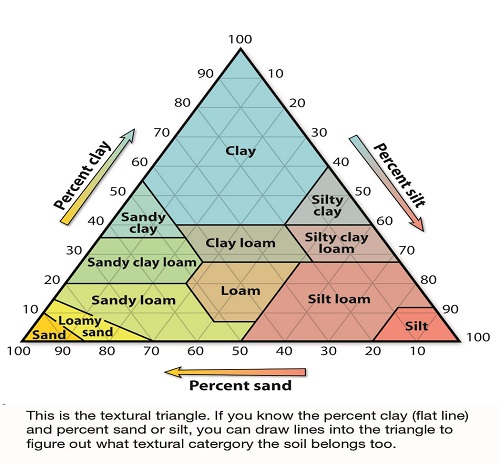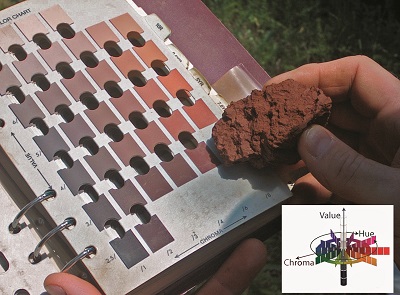Physical Properties of Soil
Soil Texture
The particles that make up soil are categorized into three groups by size – sand, silt, and clay. Sand particles are the largest and clay particles the smallest. Most soils are a combination of the three. The relative percentages of sand, silt, and clay are what give soil its texture. A clay loam texture soil, for example, has nearly equal parts of sand, slit, and clay. These textural separates result from the weathering process.

This is an image comparing the sizes of sand, silt, and clay together. Sand is the largest. Clay is the smallest.
There are 12 soil textural classes represented on the soil texture triangle. This triangle is used so that terms like “clay” or “loam” always have the same meaning. Each texture corresponds to specific percentages of sand, silt, or clay. Knowing the texture helps us manage the soil.

Soil Structure
Soil structure is the arrangement of soil particles into small clumps, called peds or aggregates. Soil particles (sand, silt, clay and even organic matter) bind together to form peds. Depending on the composition and on the conditions in which the peds formed (getting wet and drying out, or freezing and thawing, foot traffic, farming, etc.), the ped has a specific shape. They could be granular (like gardening soil), blocky, columnar, platy, massive (like modeling clay) or single-grained (like beach sand). Structure correlates to the pore space in the soil which influences root growth and air and water movement.
Read more and download our Soil Texture information sheet.
Soil Color

The color of soil is measured by its hue (actual color), value (how light and dark it is), and chroma (intensity).
Soil color is influenced primarily by soil mineralogy – telling us what is in a specific soil. Soils high in iron are deep orange-brown to yellowish-brown. Those soils that are high in organic matter are dark brown or black. Color can also tell us how a soil “behaves” – a soil that drains well is brightly colored and one that is often wet and soggy will have a mottled pattern of grays, reds, and yellows. Read more about soil color!
Back to Soil Basics page



